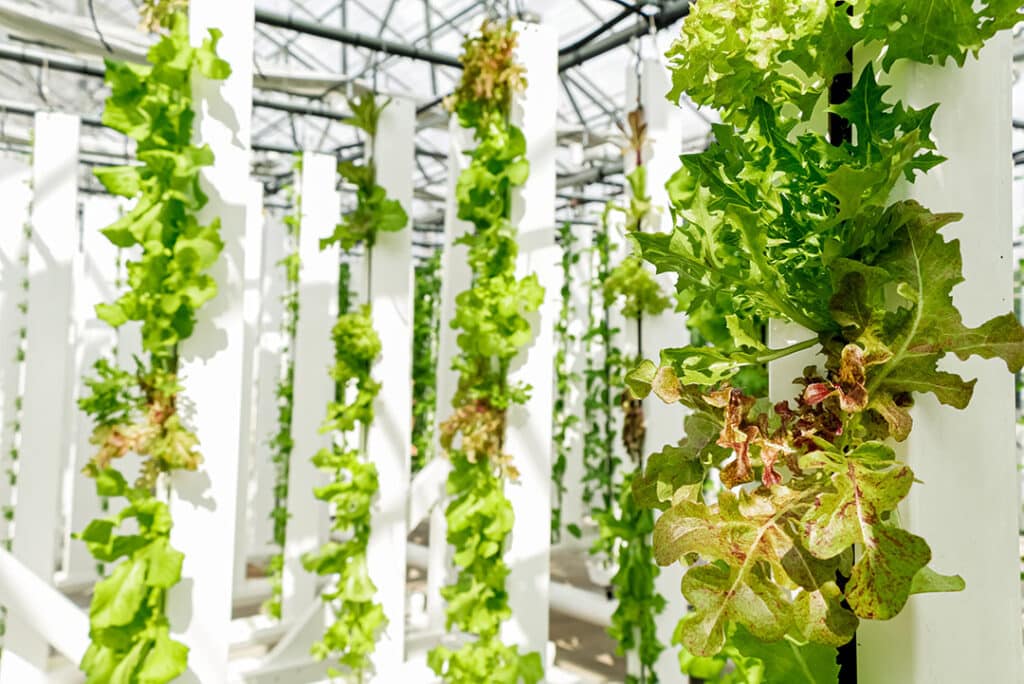Image: ZipGrow Greenhouse
In this article, we’ll explore the benefits of hydroponics for greenhouses and how to integrate hydroponic systems into an existing greenhouse. If you’re starting out or hoping to grow your business, you may find hydroponics a great way to gain an advantage and increase your profits.
As the demand for fresh produce continues to grow, the greenhouse industry is always striving for new and creative methods to enhance productivity and yield.
One solution that is gaining popularity is hydroponics, a method of growing plants without soil. Instead, plants are grown in a nutrient-rich water solution, providing a controlled and efficient environment for growth. From higher yield to lower water usage, hydroponics has become a great choice among greenhouse farmers who want to grow smarter, not harder.

Image: ZipGrow Greenhouse
What are the Wonderful Benefits of Hydroponics?
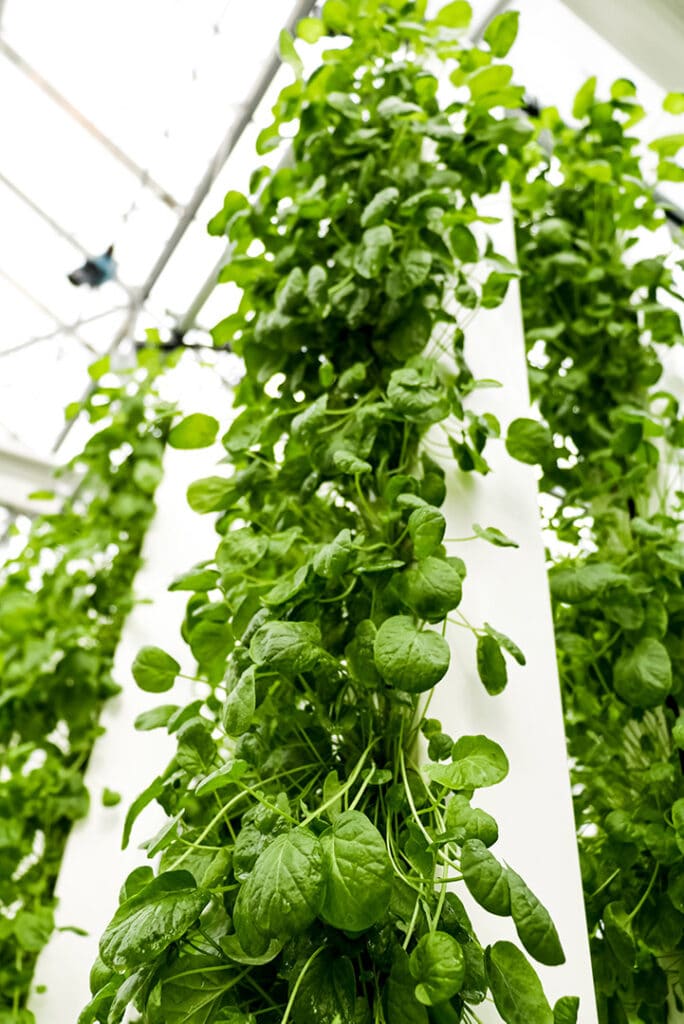
Image: ZipGrow Greenhouse
Increased Productivity
One of the primary advantages of hydroponics for greenhouse businesses is increased crop yield. Hydroponics allows you to provide optimal growing conditions, such as precise nutrient delivery and controlled environments. This can lead to accelerated plant growth and higher crop yields compared to traditional soil-based methods. As hydroponics can be implemented vertically, it allows you to make the most of limited space. Vertical systems like ZipGrow Greenhouse Rack can help you maximize your greenhouse’s growing capacity and grow more crops within a smaller footprint.
Water Efficiency
One of the primary advantages of hydroponic farming for greenhouse businesses is increased crop yield. Hydroponics allows you to provide optimal growing conditions, such as precise nutrient delivery and controlled environments. This can lead to accelerated plant growth and higher crop yields compared to traditional soil-based methods. As hydroponics can be implemented vertically, it allows you to make the most of limited space. Vertical systems like ZipGrow Greenhouse Rack can help you maximize your greenhouse’s growing capacity and grow more crops within a smaller footprint.
Reduced Labor
With hydroponics, there is no soil, which means no weeds. This reduces the need for time-consuming and labor-intensive weeding tasks. Additionally, some hydroponic systems automate certain processes, such as nutrient delivery and watering, further reducing labor requirements and allowing for more efficient operations.
ZipGrow Greenhouse Systems are designed specifically to reduce labor. Our farms can reduce labor to just 10% of operating costs, which can account for up to 50% in a traditional greenhouse.
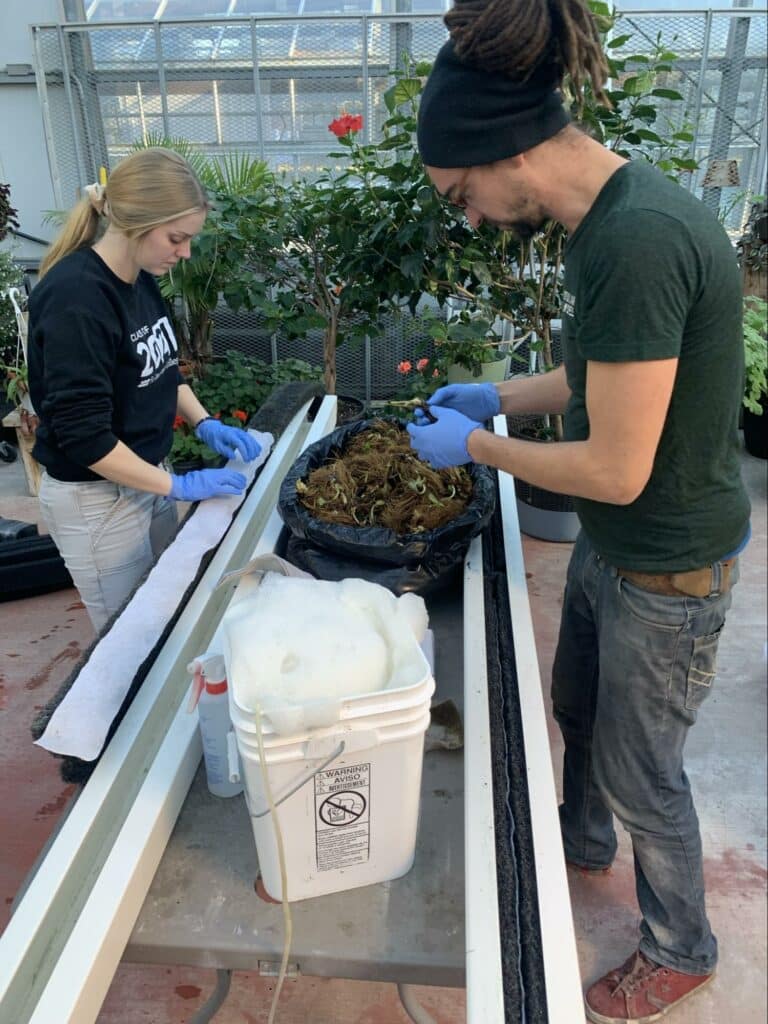
Higher Quality and Consistency
Hydroponic cultivation provides better control over the growing conditions, resulting in consistent crop quality. By maintaining optimal parameters like light, temperature, and nutrients, you can produce crops that are more uniform in size, shape, and taste, which can be particularly beneficial for commercial greenhouse growers.
Hydroponics for Greenhouses: Recommended Systems
Hydroponic farming offers several methods to cultivate crops in greenhouses effortlessly. These methods have revolutionized the way of growing and harvesting, making it possible to produce a variety of greens and herbs all year round.
One of the simplest and most fundamental methods of hydroponic cultivation is the deep water culture (DWC) system. This technique involves suspending plants in a water-based solution that has been enriched with essential nutrients, while their roots are submerged within the solution. To ensure that the roots receive an adequate supply of oxygen, an air pump is typically used to oxygenate the water.
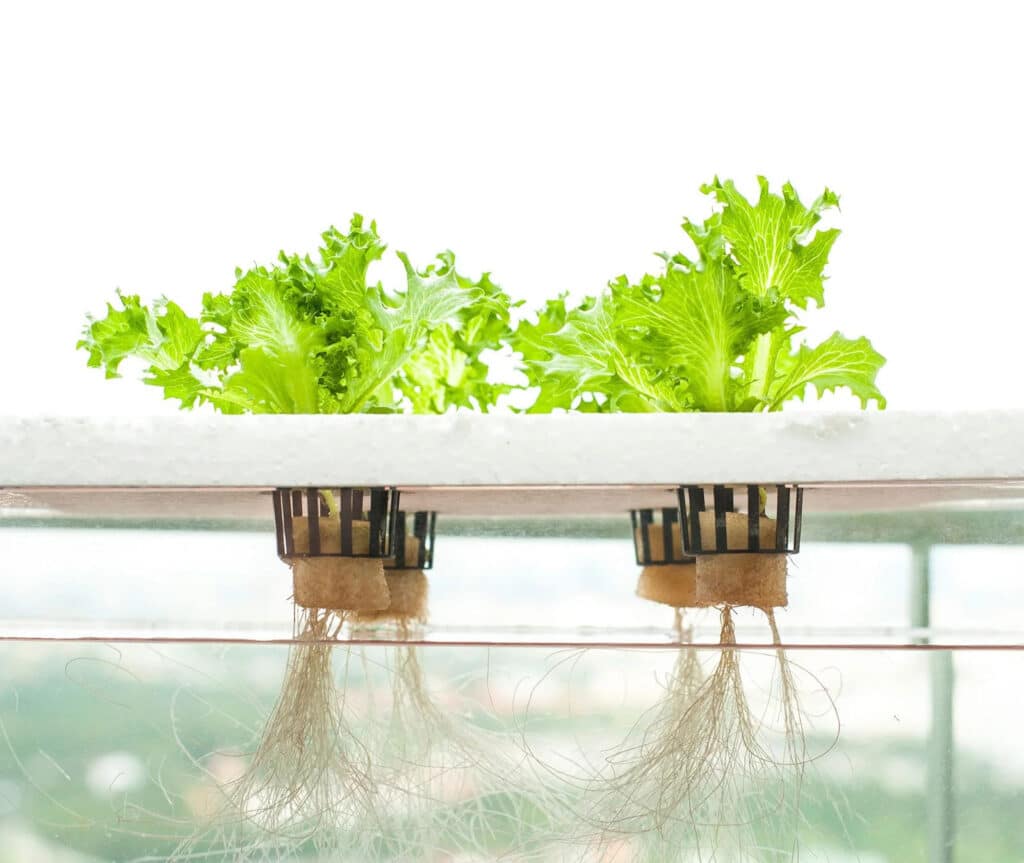
When using these systems on a commercial scale, it is important to keep in mind that they need a significant amount of water and may require a chiller to maintain cool temperatures.
Another method to consider is the nutrient film technique (NFT) system. This approach uses a fine film of nutrient-rich water that cascades over the plant’s roots, providing them with the essential nutrients they require to thrive.
NFT systems are less common for tall stature crops because of the need for trellising. While this system may be more complex compared to the DWC, when established correctly, it proves to be efficient and productive.
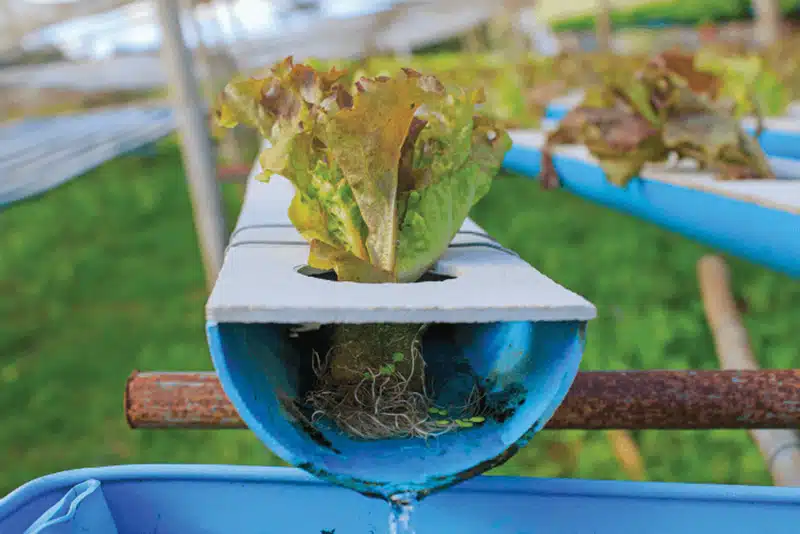
Drip irrigation systems such as ZipGrow Towers apply drip emitters that steadily release water and ensure the roots stay hydrated and the medium remains moist. The nutrient-rich water solution is directly fed to the plant roots through tubes, allowing precise control of water and nutrient delivery. This method is particularly advantageous in large-scale greenhouse operations.
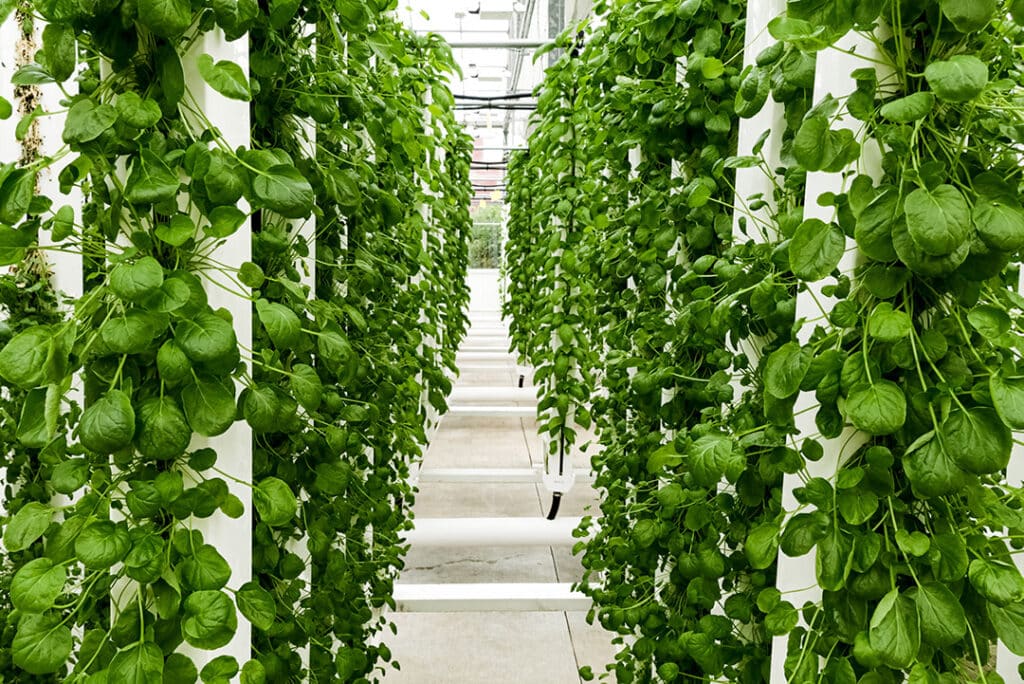
Image: ZipGrow Greenhouse
Getting Ready for Action
Ensure that your greenhouse is suitable for a hydroponic system and easily accessible for regular maintenance and harvesting. Maintaining a well-ventilated environment is crucial to avoiding excessive humidity and troublesome mold buildup.
Choosing the right crops for hydroponic farming is another key to success. While hydroponic farming can be used to grow a wide range of crops, some crops are better suited for hydroponic farming than others. Consider factors such as crop yield, growing time, and market demand when selecting the right crops for your hydroponic farm.
Best Crops for Hydroponcis
hydroponics for greenhouses requires an initial investment in infrastructure, equipment, and knowledge. However, the potential benefits in terms of increased productivity, resource efficiency, and crop quality make it an attractive option for many greenhouse growers. Before starting, we recommend customizing your farm’s size and capacities to fit your personal goals and the market’s needs.
Hydroponic for Greenhouses: Our Solution
ZipGrow Towers are ideal for indoor farming and home gardening, but their upright design makes them even more suitable for greenhouses. The Towers are engineered for adequate light reflection and airflow throughout the growing area. Due to their lightweight nature, moving, rearranging, harvesting, or transporting them is a breeze, which simplifies the entire cultivation process.
ZipGrow Towers stands out from other systems as it utilizes vertical growth to maximize your space and production. This method also provides easier access to plants, making it simpler to monitor for nutrient deficiencies and pests.
We believe ZipGrow Tower are the perfect solution for hydroponics for greenhouses, even though we know we’re a little bias.
ZipGrow™ Greenhouse
When it comes to maintaining a competitive edge in the market, ZipGrow Towers are a valuable tool. Their adaptability makes it easy to stay ahead of the curve and make adjustments in the market as needed. Whether you’re looking to expand your business or simply improve your yield, ZipGrow Towers are a trustworthy and efficient solution.

